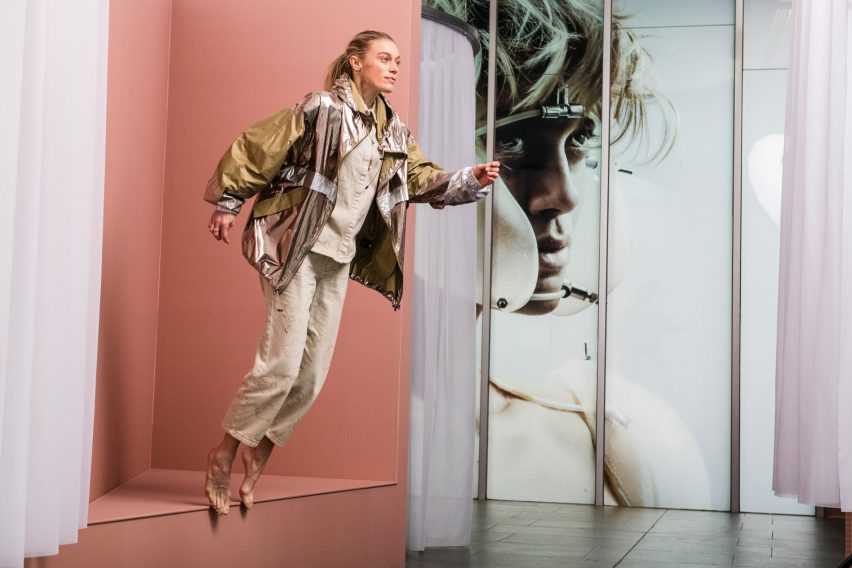
"I'm interested in giving science fiction an overdue sex change" says Lucy McRae
The future is fleshy, according to Lucy McRae. As a new exhibition of her work opens at NGV in Melbourne, the designer explains why she believes the human body holds the key to the development of technology.
Lucy McRae: Body Architect, on show at NGV Australia, is the first career retrospective for the Los Angeles-based, Australian designer, whose work uses the body to speculate on the future.
Speaking to Dezeen, McRae said that the world of science fiction is too dominated by male perspectives. She wants to explore how the future, from a female point of view, can be "messy, visceral and human".
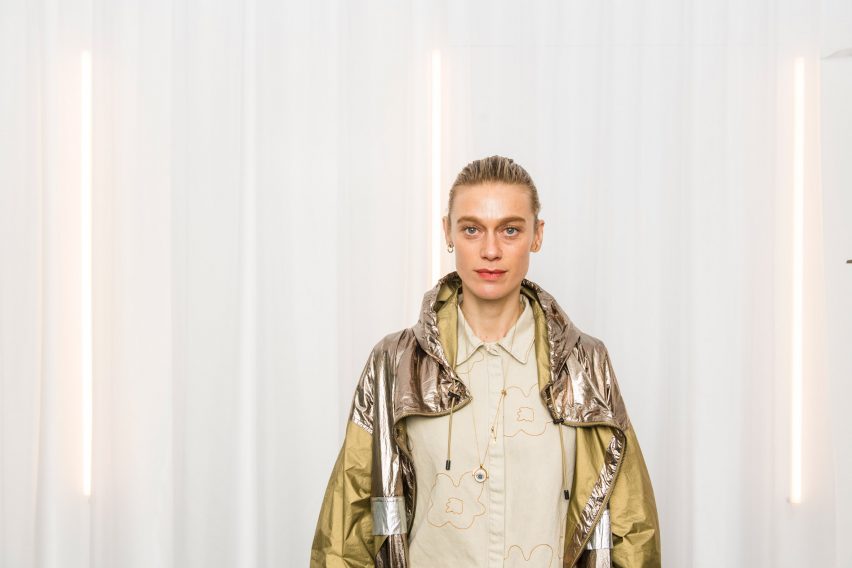
"I'm interested in giving science fiction an overdue sex change," she explained.
"The art I make speculates on the human condition with narratives that are feminine, raw and laced with emotion, to provoke and steer our future."
"We've been submissive to technology"
McRae, 40, invented the title body architect. Working across science, technology, art and design, she uses the body as a starting point to explore how technologies like genetic engineering and artificial intelligence might be developed and adopted.
She wants to make people stop and think about whether those technologies are welcome or not.
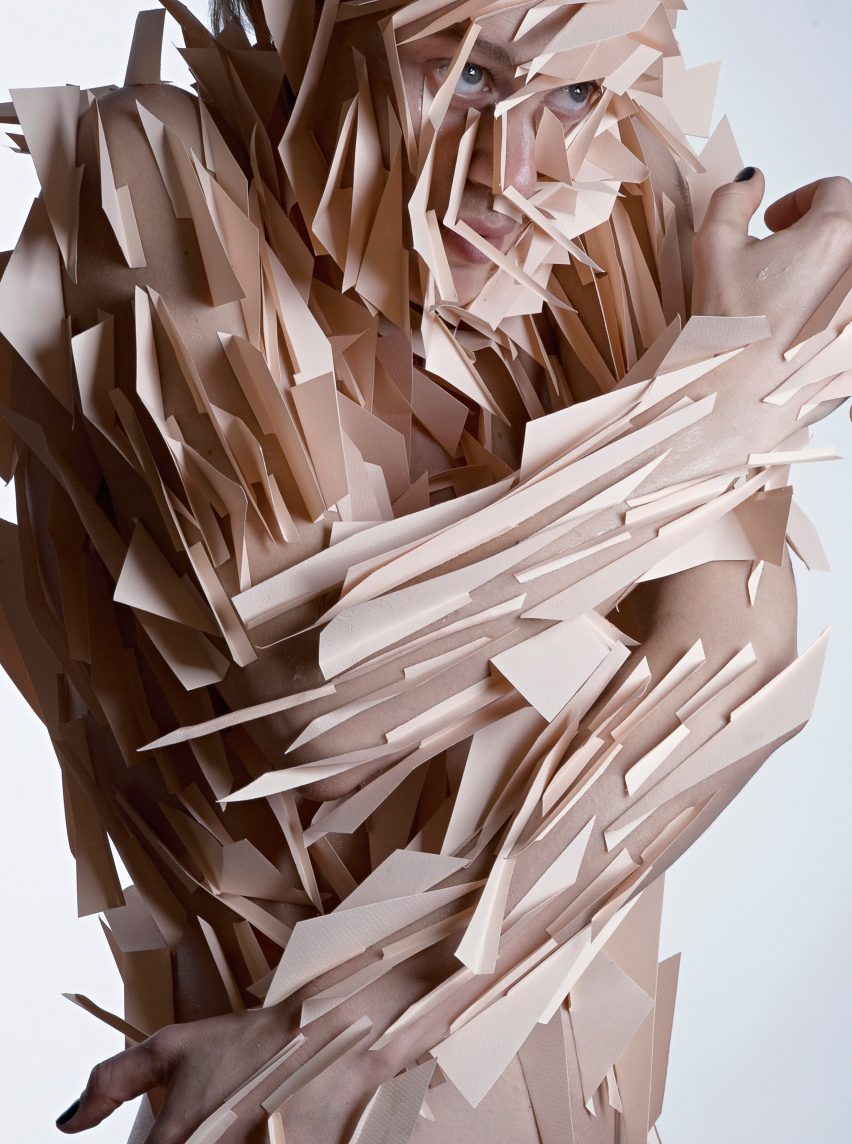
"We've been submissive to technology – it drips into our lives and we just adapt. It's important to challenge whether we really want it," McRae said.
"If you tell plausible stories about the future, people will want these narratives to be real," she continued. "And that can steer the course of technology."
Asking impossible questions
In her early career, McRae led a team researching the potential of wearable tech, for consumer electronics brand Philips. That led to a collaboration with designer Bart Hess, resulting in a set of striking images that show different ways of distorting the body.
Swallowable Parfum suggests how technology could disrupt the beauty industry
In her projects Swallowable Parfum and Biometric Mirror, McRae looked at how technology could disrupt the beauty industry.
The Future Day Spa imagines how a machine could replace human contact, while projects like The Institute of Isolation and the Dezeen-commissioned Astronaut Aerobics suggest how the advancement of space travel could further augment the body.
The Astronaut Aerobics installation explored how space travel might augment the body
McRae doesn't pretend to know what the future will bring – she simply wants her projects to provoke discussion.
"My philosophy is to ask impossible questions, to disrupt, to swim upstream and to make things I've never made before, she said.
The future is unfathomable
Lucy McRae: Body Architect is on show at the Ian Potter Centre at NGV Australia from now until 9 February 2020.
Spread across five rooms, it presents videos, still imagery and installations, across a backdrop that brings together a 100-metre-long gradient of skin tones and theatrical-style curtains.
"It's so exciting to move through 13 years of work," added McRae. "It is my hope and wish that people walk away asking questions they have not pondered before."
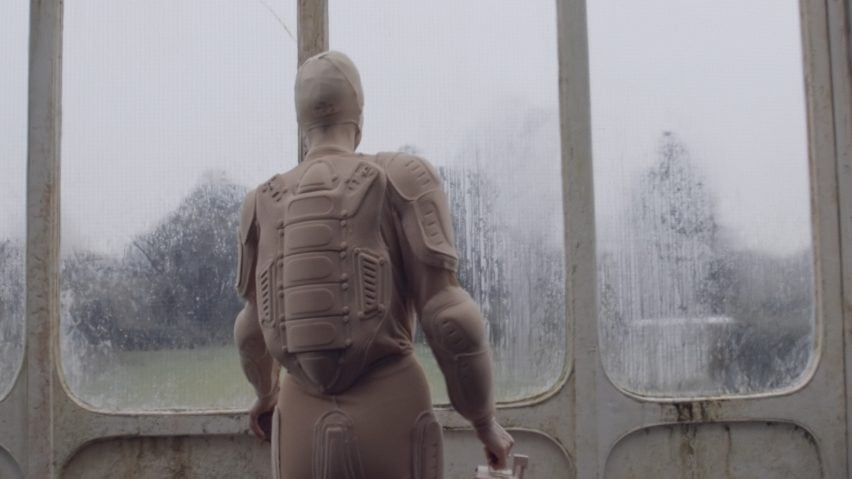
"Only we can control the way that we respond to science and technology," she added.
"I think that our response has to come from those primal, intuitive gut feelings, because we really have no idea what the future will be like – it's unfathomable."
Read on for an edited transcript of the interview:
Amy Frearson: What is a body architect, and why did you start calling yourself one?
Lucy McRae: A body architect is something fabricated, a made-up name. But it won me a dream job in wearable electronics at Philips.
I was put forward for a job where I would lead the company's design research lab. In the interview, the head of resources asked me what kind of designer I was. Medical designer? Fashion designer? Lighting designer? I moved my hands around in the air like I was juggling and said 'none of them'. He said, 'in order to hire you for this job, I need to know who you are'.
So I went away and came up with this title 'body architect'. It's a nebulous term that allows me to slip between thought leader, creative director, science-fiction artist and filmmaker.
I came back a week later to tell him and, no joke, he flipped the contract across the table. The following Monday I was rolling around in a Lycra sack, developing the kind of inspiration for what would become the Bubelle Dress.
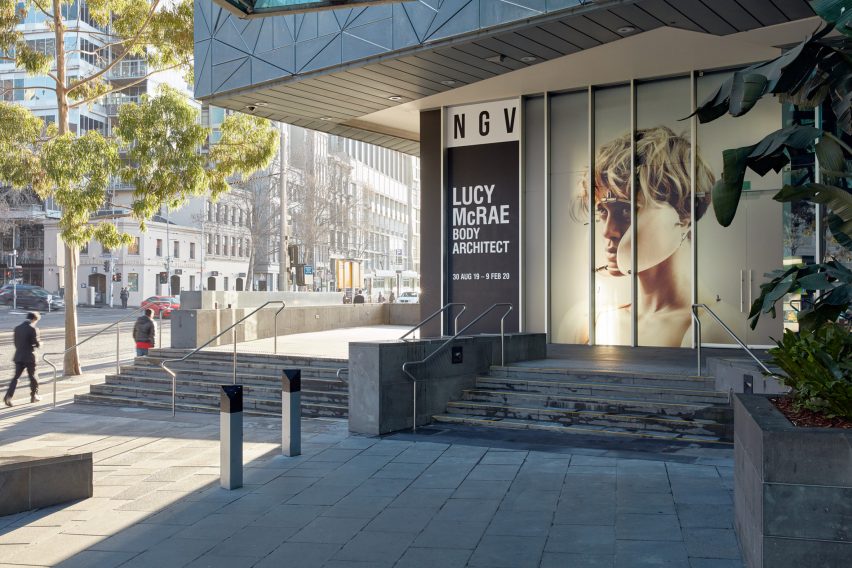
Amy Frearson: What exactly does a body architect do?
Lucy McRae: The great thing about creating something from scratch, is that you get to define what it means. As a body architect, I can tap into any discipline without limitation.
I build worlds object by object to speculate on the future of the body; asking who we are and where we are headed. The worlds are presented via installation, film, photography and set design and address topics like the human condition, psychology, genetic engineering, edible technology or the ethics of artificial intelligence.
My philosophy is to ask impossible questions, to disrupt, to swim upstream and to make things I've never made before.
Amy Frearson: Why is the body so central to your work?
Lucy McRae: I started doing classical ballet at the age of four and as I grew older I became much more serious about it. So as a teenager I was doing very high-level ballet competitions, training four days a week. Then, when I wasn't doing ballet, I was running 100-metre hurdles.
Both disciplines were about performance and pushing my body's physical limits. Exploring the edges of the human body and proposing ways to optimise our existence, is what continually drives my work.
Using my body allows me to go deeper into a concept and play the protagonist to act out worlds. I'm interested in the idea of thinking through making, either as a film director, or as the test dummy when I'm building an installation.
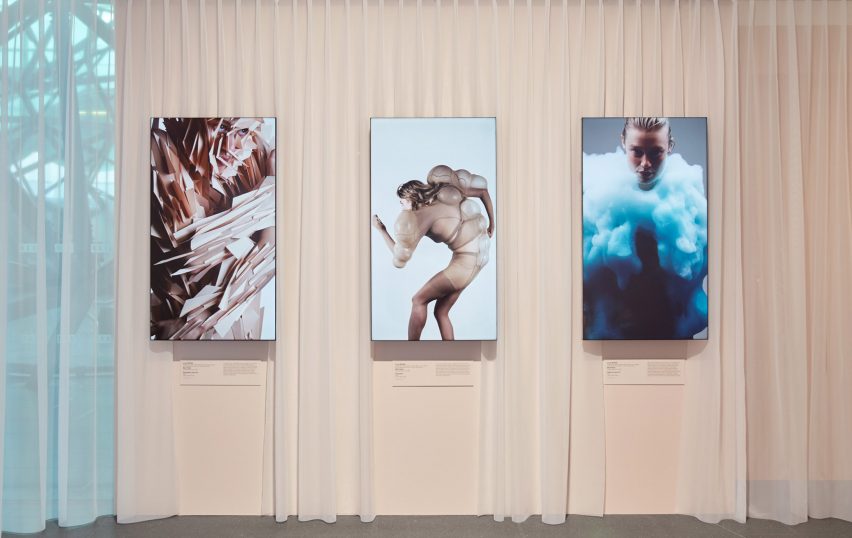
Amy Frearson: Tell about the phrase you use, 'the future is fleshy'. Where did this come from and what does it mean in relation to your work?
Lucy McRae: I was asked to speak at an MIT conference on wearable technology with Christina Agapakis, who is creative director at Gingko Bioworks, a company that customises the microbiome. 'The future is fleshy' was the title of our presentation, which shone a light on the lack of feminine points of view in science and tech.
I'm not interested in a future that is associated with science-fiction tropes that are masculine, mechanical, or not reflective of what I think makes us human. I'm interested in things that are messy, visceral and human.
This thinking relates to the body, both aesthetically and in how we could experience the world. As an artist, the way that I approach technology is using it like a membrane, an elastic visceral membrane that can be draped, pulled apart, made transparent or mutated.
Amy Frearson: How male-dominated is the world of science, technology and science fiction in your experience, and how is that shaping our visions of the future?
Lucy McRae: Traditionally art, architecture, engineering, science, maths, medicine, construction, law, agriculture… most industries are male-dominated. My goal is to portray females in these roles and summon feminine leadership.
When I worked at Philips, I had a really amazing team who were predominantly male. Sometimes I would buy men's deodorant, and I would wear baseball caps and men's trousers, just to get into the headspace and the hormonal output of the rest of my team.
I'm interested in giving science fiction an overdue sex change. The art I make speculates on the human condition with narratives that are feminine, raw and laced with emotion, to provoke and steer our future.
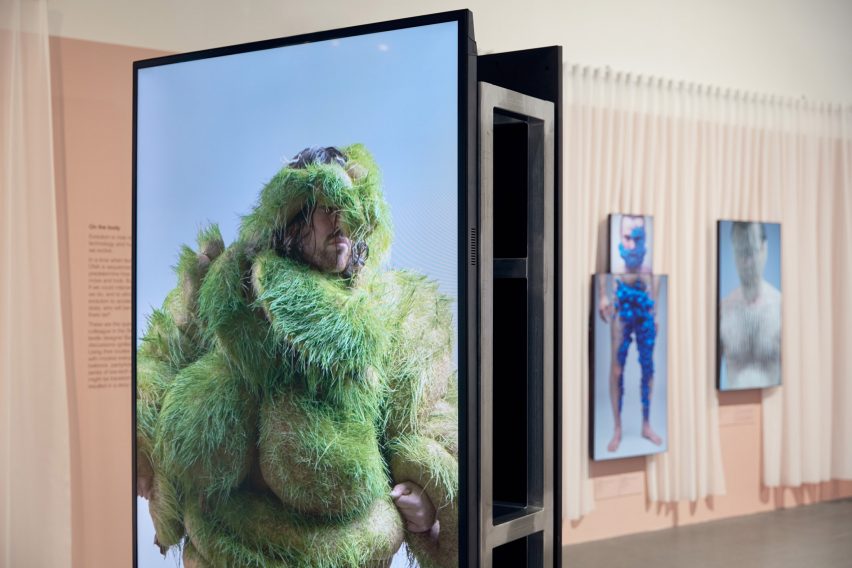
Amy Frearson: Tell me about your time at Philips. What kind of things were you working on?
Lucy McRae: At Philips we used the body as a platform for innovation to question the future of tech and the body. We weren't interested in technologies that were intelligent, we were interested in technologies that were sensitive. We created a series of dresses that blushed and shivered with light, jewellery that sensed hydration and an electronic tattoo that was augmented by touch.
These were high-art concepts for a consumer electronics company. We were trying to understand whether people wanted this. Would people implant tech under the skin? Would they wear a dress that senses emotions? The concepts were meant to be disruptive and provocative.
Amy Frearson: Was the series of images you made with Bart Hess an extension of these ideas?
Lucy McRae: The series I made with Bart, in particular the Germination series, explores the concept of humans, plants and animals merging. Could we sprout grass from the pores of skin and become ecological beings?
Bart and I met at Philips doing the electronic tattoo. At the time, plastic surgery was becoming a consumer product. So we were having conversations about the future of beauty. What is the future of beauty? If everyone is going to look the same, will this create a mono aesthetic? Will that cause a rebellion of the ugly?
The important thing for us was that we made immediate imagery for these conversations. We would do them in a day, we would do them once a week, and it became a sport using various different materials. It would be an experiment and it was really primal.
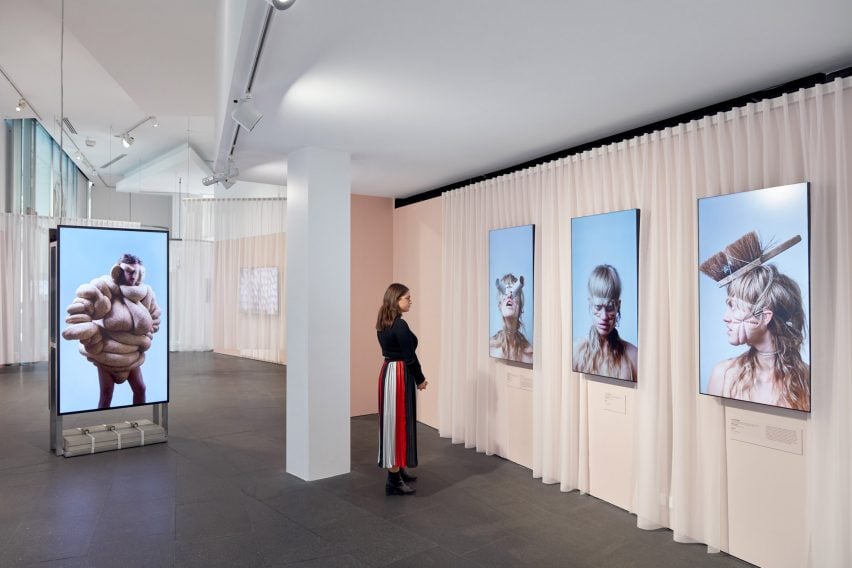
Amy Frearson: How did you move from these projects to the type of speculative futures things you did next, like Swallowable Parfum?
Lucy McRae: The very foundation of looking at technology through an artistic lens was what I learned at Philips. It was such an incredible lesson, to see technology as something you could give a story to.
After I left, I had four and a half years of experience in wearable tech and I had this project with Bart, but nobody really knew how to use me. Swallowable Parfum was me saying, 'this is what I can do, this is how you can use me'.
It was 2011 and at the time the beauty industry was worth $465 billion in the US alone; perfume had never been disrupted.
While animals sniff butts to find breeding companions, humans wear deodorant, perfume and take hormone replacement pills that all mask body odour. When we sweat, it's the smell of our immune system oxidizing through our skin. The concept of the pill was to manipulate the immune system to create a biologically enhanced fragrance from the inside out.
Could a biologically enhanced fragrance be responsible for disrupting the laws of attraction? Would we choose different partners to breed with? Could the beauty industry be responsible for changing the course of evolution?
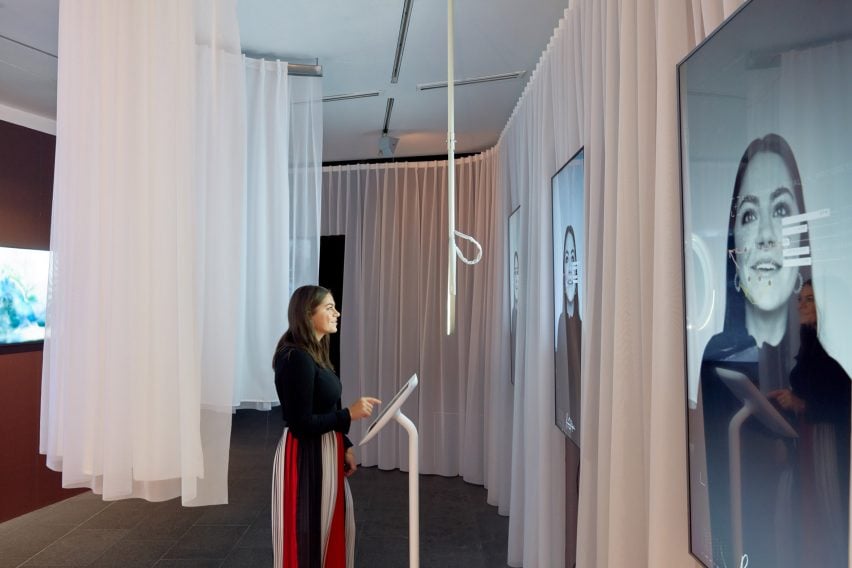
Amy Frearson: Do you see your projects as trying to ask questions or answer them?
Lucy McRae: Definitely to ask them. I'm not interested in saying how things will be or how they should be. I want to ask, what if this happened? The aim is to ask impossible questions to provoke the body's relationship with science and create forums for debate. I want the complexity of where we are right now to reach the fringes of culture.
We've been submissive to technology – it drips into our lives and we just adapt. It's important to challenge whether we really want it.
What I learned with Swallowable Parfum is that, if you tell plausible stories about the future, people will want these narratives to be real. And that can steer the course of technology.
Amy Frearson: After that it seems like you moved on from beauty into thinking about the relationship between the body and space. Can you tell me about some of those projects?
Lucy McRae: I have to say, the project I did with Dezeen was pivotal. It was the installation I did – up until that point, I had been making short films. After that, I created the first Future Day Spa at the Ricoh conference in Los Angeles.
The Future Day Spa is an immersive art installation offering 360-degree hugs via a machine. When the body is placed in a vacuum, the circulation of blood increases. In the 1960s, NASA used vacuum pressure as a way to prep astronauts for the lack of gravity in space. Like a human hug, this hugging machine triggers the natural release of oxytocin in the brain. This hormone is responsible for building trust and love between people.
One of the people I treated at the Future Day Spa suffered from haphephobia, which is the fear of physical contact. I gave him a nine-minute treatment and when he got up out of the bed, he hugged me. It wasn't what I had expected!
After learning that someone who feared touch craved for it, I threw my attention into the psychology of isolation. Why would someone essentially silence the release of oxytocin in the brain?
With the Institute of Isolation, I started to look more at the mind. If we are going to space, how do we condition our mind? Sure, we can train the body, but the mind is very unpredictable.
The Institute of Isolation film is an observational, fictional documentary. It explores the design of physical experiences and interior space as a way to improve human performance; architecture and interior spaces designed to become tools to benefit humans.
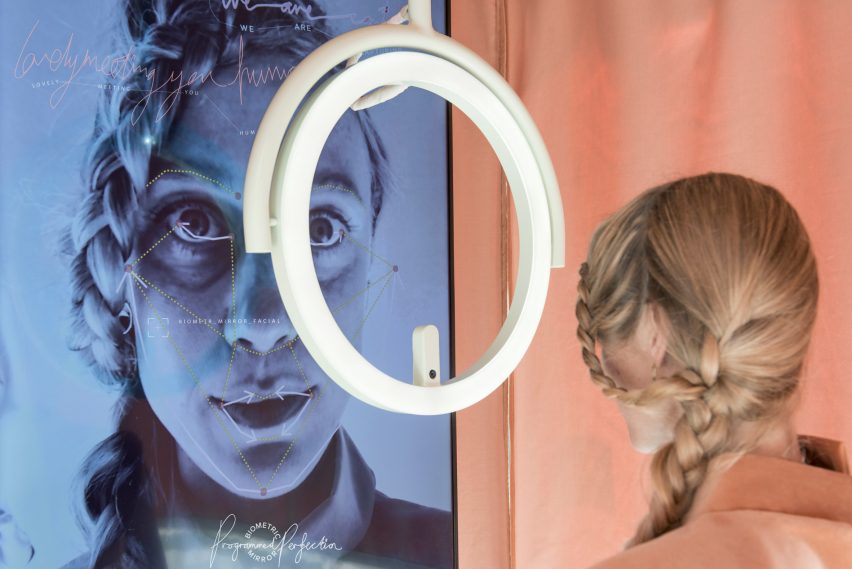
Amy Frearson: Can you tell me about the exhibition at NGV and how you're presenting these projects there?
Lucy McRae: My work has never been exhibited under the one roof before – it's so exciting to move through 13 years of work.
The show asks how technology is changing our bodies. It's five rooms with images of augmented bodies; music videos that take you on flights of biological fancy and an immersive algorithm that makes your face "perfect".
The exhibition design team at NGV printed 100-metre-long balayage wallpaper, in a gradient that speaks to the many shades of skin. Curtains are layered over this moving colour, acting as a buffer between the wall and the works. The curtain is a metaphor that speaks to skin over bone; the curtain permeable like the body, with hints to theatre and performance.
Amy Frearson: What do you want visitors to the exhibition to go away thinking or feeling?
Lucy McRae: I really feel like we are at a time when science is urging us to operate from a very different place than we have before. Science is rubbing up against our primal instincts, forcing us to operate from a different place. The exhibition is an opportunity to take stock of where we are at in terms of science and technology.
It is my hope and wish that people walk away asking questions they have not pondered before. Art is an impactful medium to share complex scientific stories, to democratise these subjects and open up a conversation around ethics. By reaching cultural fringes, we all get to have a stake in the future.
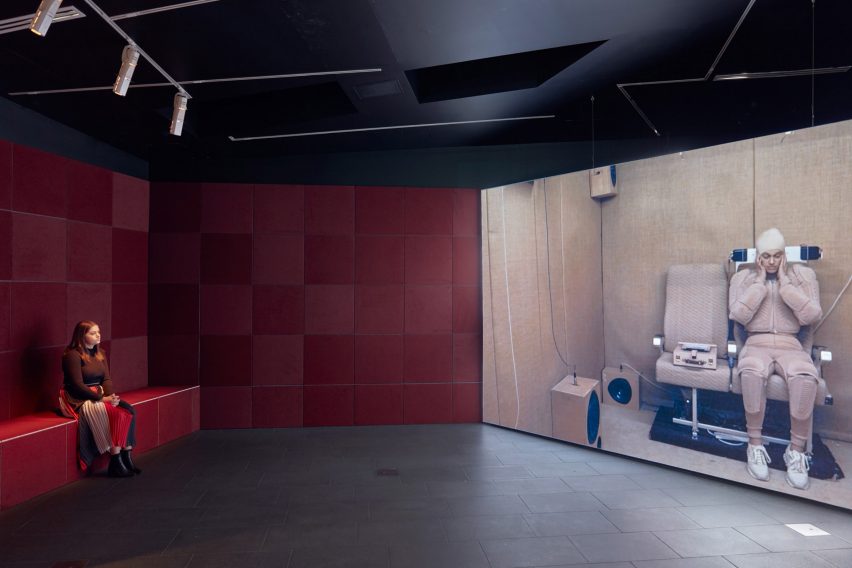
Amy Frearson: Are you optimistic or pessimistic about our future relationship with technology?
Lucy McRae: I'm an optimist. I think progress comes from confidence and trust. Rarely do you create something great without being confronted by the brink of disaster.
At the start of a project, all stakeholders – be it commissioners or clients – agree to a very specific and unique format that we have designed; it's highly experimental and from the get go, we don't know what the outcome will be. There's no blueprint for the types of things I do.
Only we can control the way that we respond to science and technology. I think that our response has to come from those primal, intuitive gut feelings, because we really have no idea what the future will be like – it's unfathomable. Instinct and intuition aren't things that are learned, they are things that you're born with and that you can act on.